 Seventy percent of the voters in Sonoma and Marin Counties backed the sales tax levy for the SMART commuter train three year ago, and enthusiasm and desire for the project remains high, as demonstrated at a lively midday rally in support of the train on Thursday.
Seventy percent of the voters in Sonoma and Marin Counties backed the sales tax levy for the SMART commuter train three year ago, and enthusiasm and desire for the project remains high, as demonstrated at a lively midday rally in support of the train on Thursday.
Lisa Maldonado, speaking for the North Bay Labor Council, placed the SMART train squarely in the tradition of employment-generation public works projects launched 80 years earlier by then-President Franklin Delano Rooseveldt.
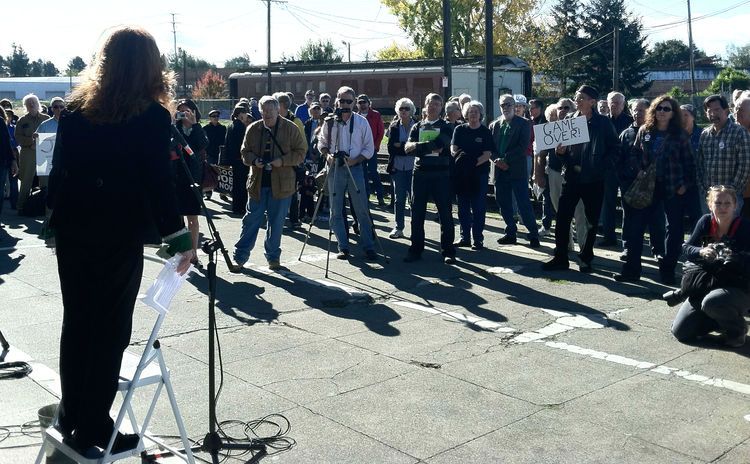 Supervisor Shirlee Zane addresses the SMART Train rally at the Santa Rosa rail station.State Senator Noreen Evans added that the effort to undo SMART appears to be part of a much wider campaign opposing rail projects across the country.
Supervisor Shirlee Zane addresses the SMART Train rally at the Santa Rosa rail station.State Senator Noreen Evans added that the effort to undo SMART appears to be part of a much wider campaign opposing rail projects across the country.
In addition to the bike trail that will run next to the railroad tracks, the train cars themselves are being built to carry bicycles as well as passengers. That capacity has fired up the imagination of Sandra Lupien, Outreach Director for the Sonoma Bicycle Coalition.
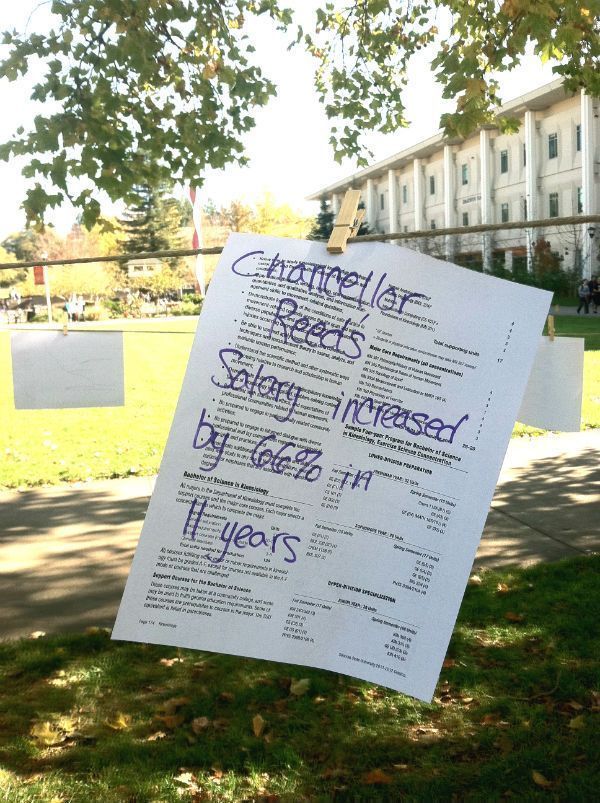
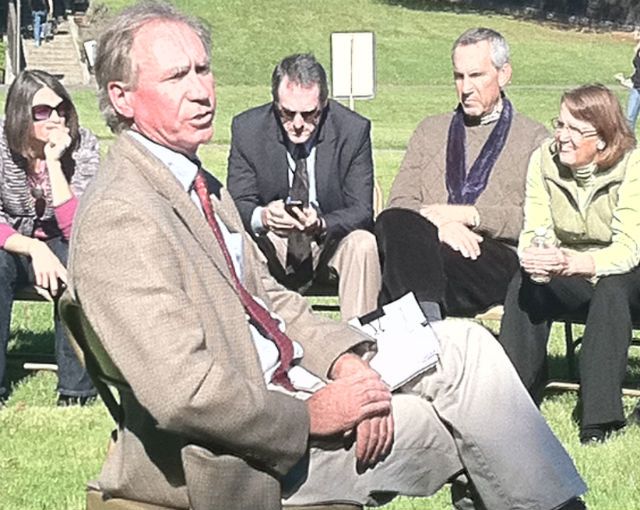 SSU Provost Andrew Rogerson met with students and staff in a dialog circle on the central campus quadrangle at noon.Along with the concerns about capping the number of units students can enroll in, much of the dialog with Provost Andrew Rogerson focused on the cancellation of one specific course, Universtiy 238, which was a class tailored for training students in leadership skills. Kia Kolderup-Lane of Students for Quality Education was among those objecting to the change.
SSU Provost Andrew Rogerson met with students and staff in a dialog circle on the central campus quadrangle at noon.Along with the concerns about capping the number of units students can enroll in, much of the dialog with Provost Andrew Rogerson focused on the cancellation of one specific course, Universtiy 238, which was a class tailored for training students in leadership skills. Kia Kolderup-Lane of Students for Quality Education was among those objecting to the change.
The back and forth between the Provost and the students was lively but polite, and afterward Rogerson said he felt it had been positive.
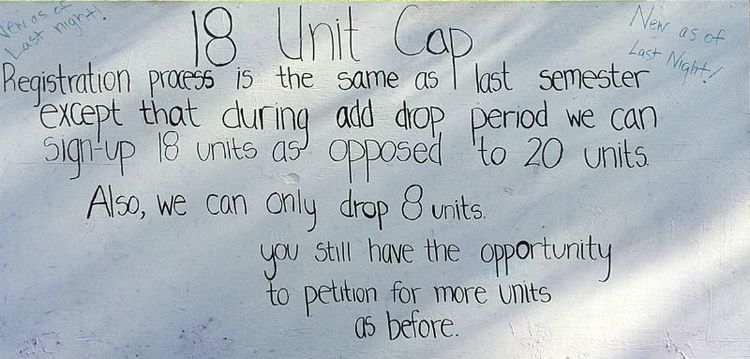
That leadership class will be replaced by a series of workshops to cover the same skills, but at about half the cost, Rogerson said. He is more concerned about the next round of belt-tightening that will result from California's shortfall in budgeted revenue projections, and even more about what might come after that.
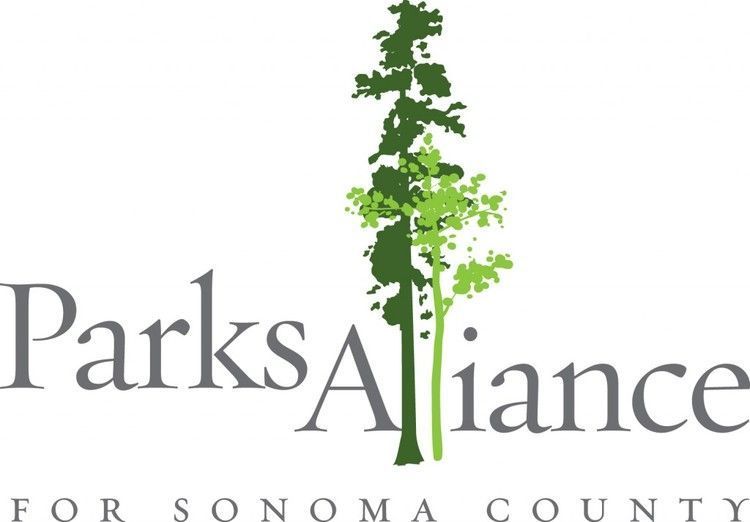 What will it take to keep five threatened state parks inSonomaCountyfrom being closed next summer? An array of new non-profit partnerships are just beginning to figure that out.
What will it take to keep five threatened state parks inSonomaCountyfrom being closed next summer? An array of new non-profit partnerships are just beginning to figure that out.
The Parks Alliance for Sonoma County is a newly formed organization that was created in direct response to the state's planned cutbacks of public parks. Deputy Director Lauren Dixon says it was also a response to local citizen's desires to take immediate steps to keep the nearby parks from closing next summer.
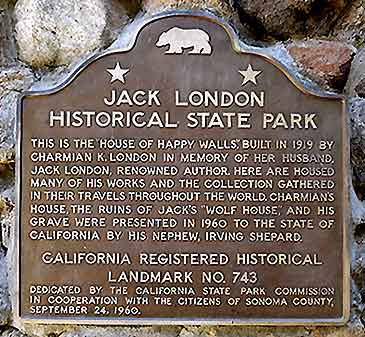 These new collaborative partnerships have been made possible by a new law passed just weeks ago. Jared Huffman's AB 42 specifically enabled non-profit organizations to step in and manage park facilities that the state can no longer afford to keep open.
These new collaborative partnerships have been made possible by a new law passed just weeks ago. Jared Huffman's AB 42 specifically enabled non-profit organizations to step in and manage park facilities that the state can no longer afford to keep open.
In each case, says Dixon, staff at the California State Parks Department, are more than willing to work with the local groups trying to keep the threatened facilities open.
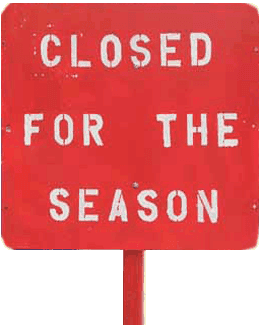 The Sonoma Coast Beaches are not on the list of parks facing closure, but they are already feeling the impacts of state budget cuts. So the beaches, too, are part of the work facing the Parks Alliance.
The Sonoma Coast Beaches are not on the list of parks facing closure, but they are already feeling the impacts of state budget cuts. So the beaches, too, are part of the work facing the Parks Alliance.

The Supplemental Nutritional Assistance Program (SNAP)—better known as Food Stamps—provides a single adult with $31.50 per week in purchasing power. But what does that actually buy?

Taking the Food Stamp Challenge means feeding oneself for a week on only the groceries a week's allotment of food stamps can buy. For a single adult, that adds up to all of $31.50 for the week. Making a concerted effort to shop carefully, and choose which purchases to make where, Normon Solomon spent nearly half of that total on a few basics and some produce—enough, he says, for about three days of meals. His first stop was at the Lucky's supermarket near downtown Petaluma.
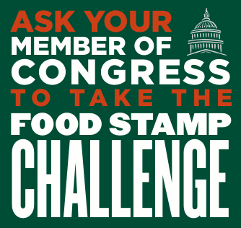
Food stamps are a very visible, often maligned form of public assistance, but Solomon says just about everyone benefits from other, less obvious governmental supports.
|
Norman Solomon's Grocery List |
|||
|
Lucky's |
|||
|
Quantity |
Item |
Price |
|
|
2 |
Apples |
$0.99 |
|
|
2 |
Bell Peppers |
$1.00 |
|
|
2 |
Avacado |
$0.94 |
|
|
|
|
$2.93 |
|
|
|
|
|
|
|
Grocery Outlet |
|||
|
Quantity |
Item |
Price |
|
|
3 lb |
Apples |
$1.99 |
|
|
1 lb |
Black-eyed peas |
$1.29 |
|
|
28 oz |
Brown Rice |
$1.44 |
|
|
1 loaf |
Flax Bread |
$2.09 |
|
|
3 lb |
Yams |
$1.99 |
|
|
12 oz |
Mozzarello cheese |
$2.49 |
|
|
|
|
$11.29 |
|
|
|
|
|
|
|
|
Combined total |
$14.22 |
|
Norman Solomon
 The $4 trillion Repurchase Loan market was a key factor in creating the 2008 recession, but it remains largely unregulated. That's risky for both big banks and individual investors.
The $4 trillion Repurchase Loan market was a key factor in creating the 2008 recession, but it remains largely unregulated. That's risky for both big banks and individual investors.
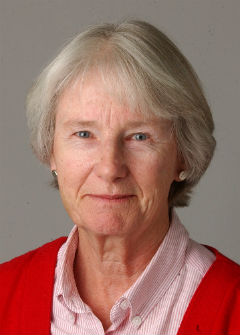 The repurchase market is still open and active today, reports business journalist Mary Fricker, even if it is only about 40% as big as it was four years ago. Still, it remains poised to grow again, and the risks associated with that are still as great as before.
The repurchase market is still open and active today, reports business journalist Mary Fricker, even if it is only about 40% as big as it was four years ago. Still, it remains poised to grow again, and the risks associated with that are still as great as before.
For more on this issue, check out Mary's RepoWatch website.

 Live Radio
Live Radio